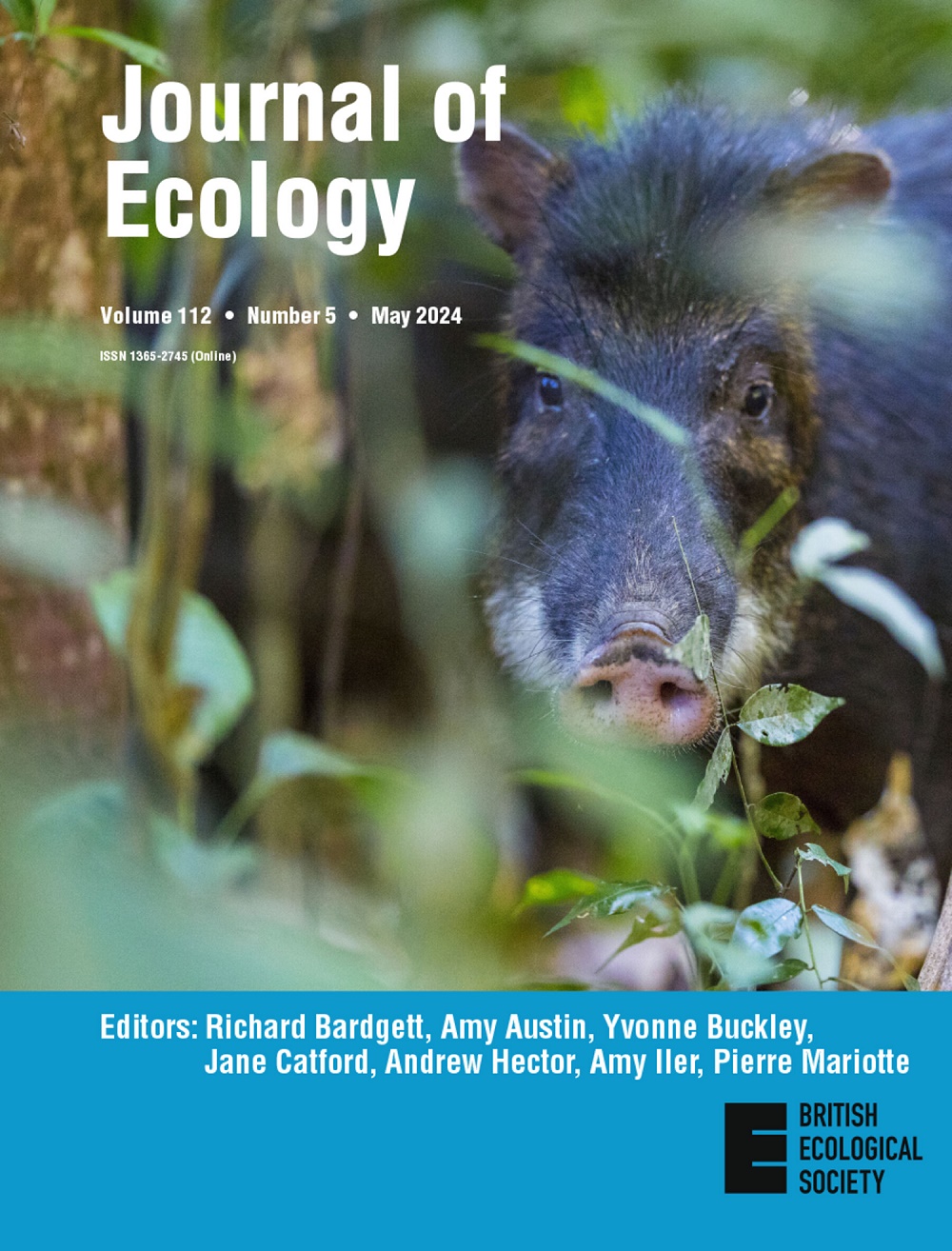Phenological selection mosaic of predispersal seed predation affects gender variation in an andromonoecious plant
IF 5.6
1区 环境科学与生态学
Q1 ECOLOGY
引用次数: 0
Abstract

传播前种子捕食的物候选择镶嵌影响雌雄同株植物的性别变异
分散前的种子捕食会影响有性异型花植物的性表达。融雪的时间决定了特定地点高山植物的繁殖物候,也可能导致高山生态系统局部水平上种子捕食强度的变化。在4年的时间里,我们沿着日本北部开花物候的自然梯度,研究了雄花雌雄同株高山草本植物多维Peucedanum multivitum (Apiaceae)的捕食强度与花的性别分配和适合度之间的关系。早花期种群的果实发育过程中,幼虫会大量捕食,而晚花期种群的种子捕食几乎可以忽略不计,因为捕食蛾在初夏集中产卵。飞蛾倾向于在花较完善、雄花较少、花茎较高的伞形花序上产卵。雄偏伞形花序的植物在早花期群体中占主导地位。选择差异和选择梯度分析表明,完美花产量的增加加速了种子捕食,导致雌性种子生产者的适合度降低。相比之下,雄花生产有助于减少捕食伤害,但这与雄性作为花粉供体的适应性无关。因此,具有雄性偏向的花性别有利于减少种子捕食和维持花的展示。在融雪后期的种群中,每伞形花序上完美花的比例增加了,在这些种群中,由于低水平的种子捕食,完美花的高产导致了更高的果实产量。在物候梯度上,完美花卉生产的自然选择从负值向正值转变,表明了异质性的局部尺度选择。综上所述,雌雄同株植物种子捕食强度的时空变化作为一种选择力,促进了花性表达的局部进化。
本文章由计算机程序翻译,如有差异,请以英文原文为准。
求助全文
约1分钟内获得全文
求助全文
来源期刊

Journal of Ecology
环境科学-生态学
CiteScore
10.90
自引率
5.50%
发文量
207
审稿时长
3.0 months
期刊介绍:
Journal of Ecology publishes original research papers on all aspects of the ecology of plants (including algae), in both aquatic and terrestrial ecosystems. We do not publish papers concerned solely with cultivated plants and agricultural ecosystems. Studies of plant communities, populations or individual species are accepted, as well as studies of the interactions between plants and animals, fungi or bacteria, providing they focus on the ecology of the plants.
We aim to bring important work using any ecological approach (including molecular techniques) to a wide international audience and therefore only publish papers with strong and ecological messages that advance our understanding of ecological principles.
 求助内容:
求助内容: 应助结果提醒方式:
应助结果提醒方式:


